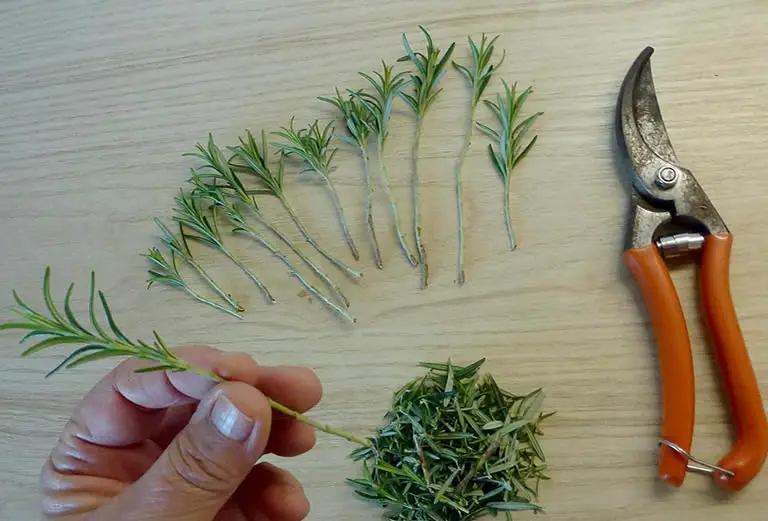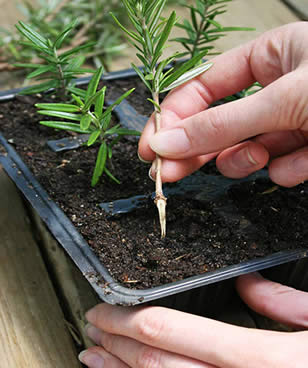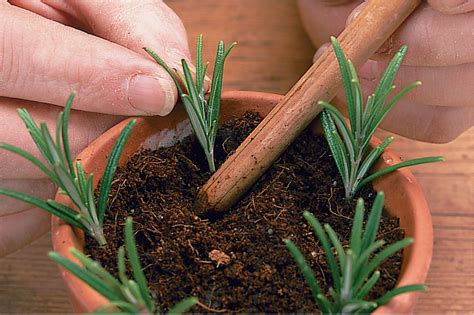Rosemary Propagation: 4 Easy Ways to Grow More of This Fragrant Herb

Rosemary is one of the most rewarding herbs to propagate. Whether you’re growing it for its piney scent, culinary uses, or ornamental beauty, there are several simple ways to multiply your plant indoors or out.
The most reliable method is through stem cuttings, but you can also propagate rosemary by layering, division, or seed. All of these approaches work for common varieties like ‘Tuscan Blue’, ‘Arp’, ‘Prostratus’, and ‘Blue Spires’.
Let’s break down how to propagate rosemary at home—and get those fragrant new plants growing in no time.
Table of Contents
- Best Time to Propagate Rosemary
- Method 1: Propagation from Stem Cuttings (Most Reliable)
- Bonus: Water Propagation (Optional Method)
- Method 2: Propagation by Layering (Great for Outdoor Plants)
- Method 3: Division (Limited Use)
- Method 4: Growing Rosemary from Seed (Slow but Possible)
- Propagating Rosemary Outdoors
- Final Thoughts
Best Time to Propagate Rosemary
The ideal time to propagate rosemary is in spring or early summer, when the plant is actively growing and stems are tender.

You can also take cuttings in early fall, but new plants will need to be protected from cold temperatures if rooted late in the season.
Method 1: Propagation from Stem Cuttings (Most Reliable)
This is the most popular and dependable method, especially for indoor growers.

-
Snip a 4–6 inch softwood stem from a healthy rosemary plant—just below a leaf node.
-
Strip the lower leaves, leaving only the top set or two.
-
Let the cutting sit for 30–60 minutes to allow the cut to dry slightly.
-
Dip the base in rooting hormone (optional, but helpful) and insert into moist, well-draining soil.
-
Keep in a warm spot with bright, indirect light.
Mist or lightly water as needed to keep the soil barely moist.
Roots should develop in 2–4 weeks.
Once the plant starts growing new leaves, you can transplant it into a larger pot or your garden.
Bonus: Water Propagation (Optional Method)
Rosemary cuttings can also be rooted in water, especially softwood stems taken during peak growing season.

-
Prepare the cutting the same way you would for soil.
-
Place the stem in a glass of clean water, ensuring only the lower part is submerged.
-
Keep the container in bright, indirect light and change the water every 2–3 days.
Bonus Tip: Add a drop of diluted liquid herb fertilizer or 5-10-10 feed like this one to the water to support healthy root formation.
Roots usually appear in 1–2 weeks.
When they reach about an inch long, move the cutting into dry soil and water lightly after a few days.
Method 2: Propagation by Layering (Great for Outdoor Plants)
Layering is a low-maintenance way to root rosemary directly from a branch that’s still attached to the parent plant.
-
Select a flexible, low-growing stem and remove the leaves from a 3-inch section.
-
Bend the bare section down to the soil and secure it in place with a wire or small rock.
-
Lightly cover the stem with soil, keeping the tip exposed.
-
Keep the area moist and wait 1–2 months for roots to develop.
Once rooted, cut the new plant away from the parent and transplant it where desired.
This method works best with outdoor rosemary that has enough space to sprawl.
Method 3: Division (Limited Use)
While rosemary isn’t a clumping herb like mint or oregano, it can occasionally be propagated by carefully dividing a mature, woody shrub—especially if it has multiple main stems and a large root system.

-
Dig up the entire plant in early spring and gently shake off excess soil.
-
Use a clean, sharp knife or garden saw to split the root ball into two or more sections—each with healthy stems and roots.
-
Replant each division in fresh soil and water lightly after a few days.
This method is best for older outdoor rosemary plants that have outgrown their space or need rejuvenating.
Method 4: Growing Rosemary from Seed (Slow but Possible)
Rosemary can be grown from seed, though germination can be slow and unpredictable.
This method is best for patient growers or those looking to start a large number of plants.

-
Sow rosemary seeds on the surface of a moist seed-starting mix.
-
Press gently into the soil but do not bury deeply.
-
Cover with a humidity dome or plastic wrap to retain moisture.
-
Place in a warm spot with bright light or under a grow light.
Keep the soil lightly moist. Germination can take 2–4 weeks, sometimes longer.
Once seedlings develop 2–3 sets of leaves, transplant them into small pots or directly into your herb garden.
Propagating Rosemary Outdoors
If you’re in USDA zones 7–11, you can propagate rosemary directly in your garden using stem cuttings or layering.
-
For cuttings, plant directly in sandy, well-draining soil in a sunny location.
-
Protect new plants with light shade for the first week or two.
-
Water sparingly until roots form—too much moisture can cause rot.
Layering is especially effective outdoors because rosemary’s flexible stems can be tucked into nearby soil and left to root on their own.
In colder zones, propagate indoors or in containers that can be brought inside before winter.
Final Thoughts
Rosemary propagation is a satisfying way to grow your herb collection, share with friends, or rejuvenate an older plant.
Whether you root a sprig in water, bury a branch in the garden, or start fresh from seed, each method offers its own rewards.
Give your new plants sun, drainage, and a little patience—and you’ll be harvesting fragrant sprigs for cooking, crafts, or decoration in no time.
Once your newly propagated herbs are growing be sure to follow the steps outlined in our article Rosemary Plant Care: How to Grow This Aromatic Herb Indoors and Out.
Thanks for reading! I'm Michael — houseplant fanatic and your Pinterest plant guide.
Follow me on Pinterest for fresh updates 🌿



